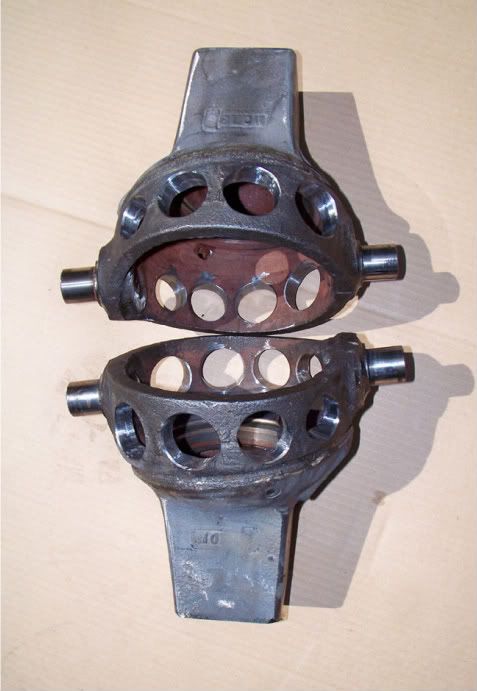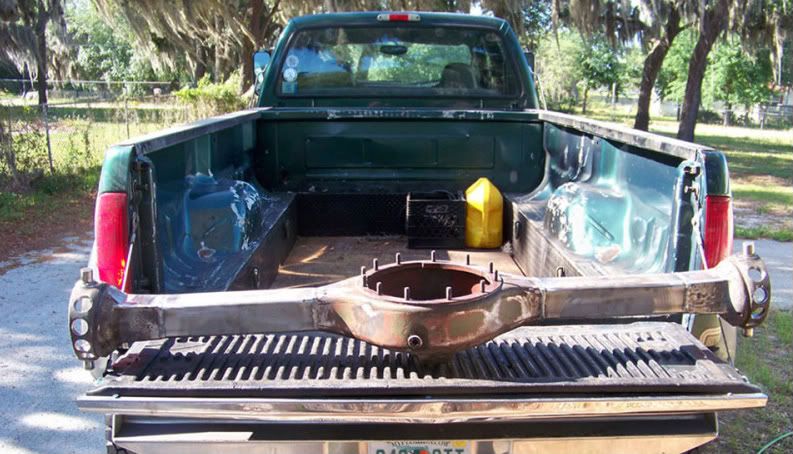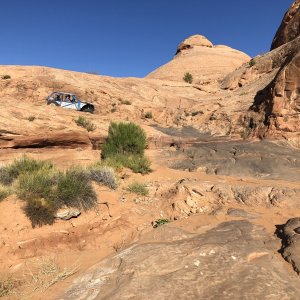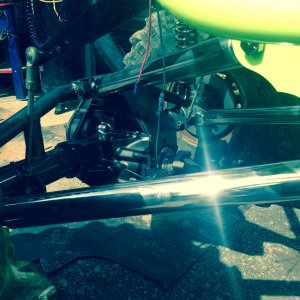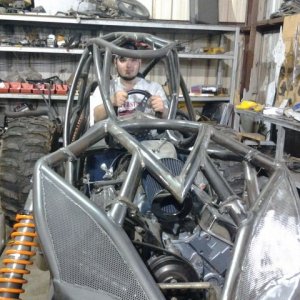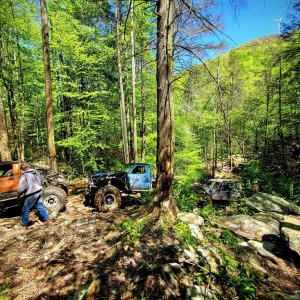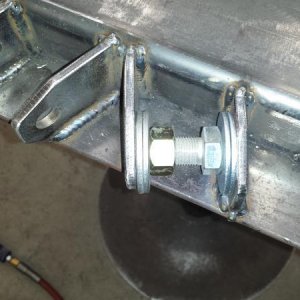patooyee
Well-Known Member
- Joined
- Sep 27, 2008
- Messages
- 5,692
It seems every conversation about making rockwells lighter inevitably tuns into a rockwell hybrid conversation. That should say something right there. I'm obviously a big fan of rockwells but I sadly admit that there is little to nothing that can be done to them to make them equal in weight to a ton.
Since the conversation seems to have shifted though, I decided to get my box of axles down off the shelf and do some comparisons. I'll post pics later but here are my observations comparing a bare d80 housing to a bare 14-bolt housing. I wanted to get the numbers posted now before I forget them but I am still at the shop tethering internet and uploading pics is slow.
- Ground clearance is within .25" of one another. From bottom of dif to bottom of axle tube both measure right at 5". The 80 has bigger axle tubes by about .5" though. The difference in axle tube radius is why I say that a d80 is about .25" worse ground clearance. That makes sense though since the 80 ring gear is .25" radius larger. Both axles are completely stock, unshaved. Both could be shaved to gain more.
- The only scale I have here wouldn't register that small a weight but just judging by hand, they are about the same. The 14-bolt is surprisingly heavy for its size. I don't know if the iron used in the 14-bolt casting is denser or something? I don't even know if that is possible ...
- If you are making a hybrid front passenger drop axle the 80 will give you about 1" more axle tube on the short side. This may or may not be important to the builder but rockwell outers are wider than 60 outers so if you need some axle tube over on that side that 1" becomes even more important with rockwell outers.
- The 80 pinion is slightly longer, but not by much. Definitely not enough to be an important factor in deciding between the two. I would guess they are within 3" of one another.
- You'll see in the pics later but the 80 housing is substantially beefier.
- Other than the lip at the bottom, both the bottom side of the diffs are fairly smooth. The 80 definitely has less of a lip though.
And just for whoever said that a rockwell bull gear is 9" dia., I measured one I had out of the axle. It's about 10.5" OD. I believe the few rockwell gearsets that have broken tend to the at the ring and pinion though. The top gearset ratio in a stock rockwell is about 2.44 : 1. The bottom gearset ratio is about 2.75 : 1. Is the overall gear reduction being shared by 2 gear sets the reason rockwell gears tend to hold up better than tons seem to?
J. J.
Since the conversation seems to have shifted though, I decided to get my box of axles down off the shelf and do some comparisons. I'll post pics later but here are my observations comparing a bare d80 housing to a bare 14-bolt housing. I wanted to get the numbers posted now before I forget them but I am still at the shop tethering internet and uploading pics is slow.
- Ground clearance is within .25" of one another. From bottom of dif to bottom of axle tube both measure right at 5". The 80 has bigger axle tubes by about .5" though. The difference in axle tube radius is why I say that a d80 is about .25" worse ground clearance. That makes sense though since the 80 ring gear is .25" radius larger. Both axles are completely stock, unshaved. Both could be shaved to gain more.
- The only scale I have here wouldn't register that small a weight but just judging by hand, they are about the same. The 14-bolt is surprisingly heavy for its size. I don't know if the iron used in the 14-bolt casting is denser or something? I don't even know if that is possible ...
- If you are making a hybrid front passenger drop axle the 80 will give you about 1" more axle tube on the short side. This may or may not be important to the builder but rockwell outers are wider than 60 outers so if you need some axle tube over on that side that 1" becomes even more important with rockwell outers.
- The 80 pinion is slightly longer, but not by much. Definitely not enough to be an important factor in deciding between the two. I would guess they are within 3" of one another.
- You'll see in the pics later but the 80 housing is substantially beefier.
- Other than the lip at the bottom, both the bottom side of the diffs are fairly smooth. The 80 definitely has less of a lip though.
And just for whoever said that a rockwell bull gear is 9" dia., I measured one I had out of the axle. It's about 10.5" OD. I believe the few rockwell gearsets that have broken tend to the at the ring and pinion though. The top gearset ratio in a stock rockwell is about 2.44 : 1. The bottom gearset ratio is about 2.75 : 1. Is the overall gear reduction being shared by 2 gear sets the reason rockwell gears tend to hold up better than tons seem to?
J. J.




